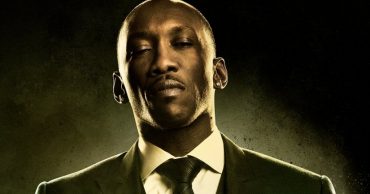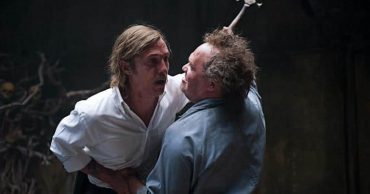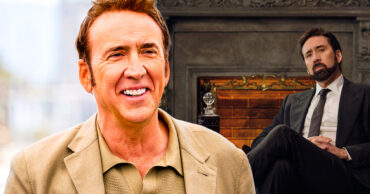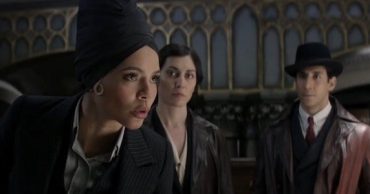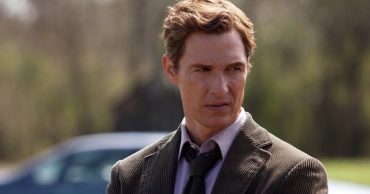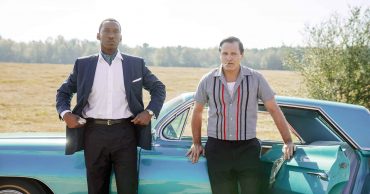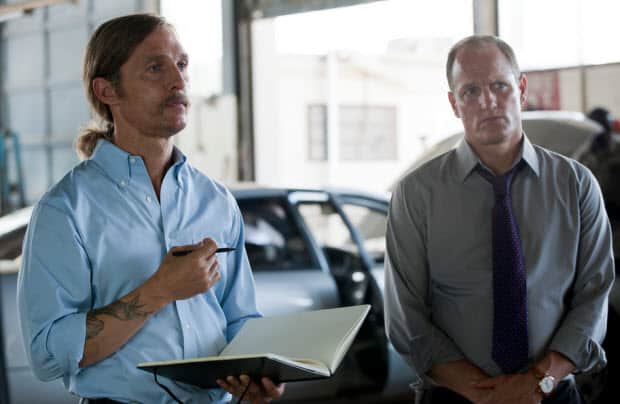
Tomorrow night, the last hour of True Detective‘s symbolically-rich first case will end, as the Yellow King, Rust Cohle, and Marty Hart complete their seventeen-year-long game of cat and mouse. Many people will tune in for the obvious reveal – who is the killer (or killers), and how did they get away with their crimes for so long? – but I’ve got a few other questions I’m hoping get answered in “Form and Void”. Here are five of them:
What about all the yellow?
Yellow’s played a big role on True Detective, be it influential supernatural literature, or visual cues embedded in each and every hour of the show, one of the many intriguing visual clues planted along the way by Pizzolatto and Fukunaga. Audrey’s worn it, Maggie’s worn it, Marty is blond… these are but three of the most obvious examples of the color yellow playing a prominent role in True Detective‘s visual palette. What I’m interested in seeing is where it turns up in the finale – wherever it may be, it will undoubtedly play a role in deciphering the complexities of the long-running Dora Lange case.
Who is the “true” detective?
This is a question we probably knew the answer to in the opening episode – from the get go, Rust Cohle’s been our go-to source of information, the most reliable unreliable narrator in recent dramatic television history. And he’s a character without growth – while Marty has slowly come to realize the error of his ways over the years, Rust has existed in the same circular path, a continuous downward spiral that only becomes more illuminating and self-destructing as it repeats itself, time and time again. With an hour left, and an increasingly unstable Cohle running the show, the space between him and Hart (in terms of their detective skills) draws closer and closer. Will Cohle’s one-track mind on Tuttle’s family lead him astray, forcing Hart to put the pieces together Cohle never could connect – or will our instincts be right, and Cohle will be the one who finally ends (or doesn’t end, possibly) the cycle of ritualistic violence occurring in the Louisiana bayou?
How does Audrey – and the rest of Hart’s family – play into the finale?
This could turn out to be the most important question; there hasn’t been an image, a reference, or a scene in True Detective‘s early episodes that hasn’t reappeared in the season’s 2012-centric second half. That is, except for a couple: chief among them Audrey’s drawings (and teenage behavior), and the strange trip Marty took to visit his in-laws, where his wealthy father-in-law blathered on about “everything’s about sex” with the “black makeup” wearing kids today… a conversation that takes place by a large lake they own, which itself could be another reference to the King in Yellow (“along the shore the cloud waves break,” the opening sequence of Carcosa’s poetic description reads). Two things we can be certain of: Audrey certainly knows something about the Five Horsemen (thanks to her drawings, action figure scenes, and numerous suggestions that something’s wrong with her), and that Maggie’s parents play some kind of role in this… after all, why would we spend any time with them if they weren’t important?
Where does the ‘spiral’ end?
My single favorite symbol of True Detective‘s freshman anthology has been the spiral; the continuous outward (or inward?) circle that describes everything from Cohle’s sanity to the ever-broadening nature of the Lange case, particularly since it went off the books and into Cohle’s brain (and storage unit) in 2010. It’s appeared as tattoos on characters, decorations on Marty’s kitchen wall (and the door of Cohle’s storage unit, his ‘home’ in 2012, for all intents and purposes), and even in Cohle’s brain (remember that hallucination of the crows?). Time may be circular, but the story of True Detective is a spiral: and every spiral comes to an end, even if we may not be able to discern whether it is in the insulated center, or on the fringes of the spiral’s outer rings. All we know is that the spiral (unlike eternity) eventually ends – but where, how, and why will remain a mystery until the closing moments of “Form and Void”.
Will Rust die?
Back in 1995, Rust talked about how he wasn’t the type of man to commit suicide – and in 2012, we see him telling Marty that he’s about ready to “tie off” this cycle of violence and degradation he’s called his life. He’s had a failed marriage (and a failed long-term relationship as an adult), a series of addictions (including the most dangerous; his addiction to danger), a ruined career, and a daughter he watched die in his own driveway – once the Lange case ends, there isn’t much for Rust left to hitch his wagon on in the sprawling landscapes of Louisiana (and beyond). Will he sacrifice himself to end the cyclonic (there’s that spiral again!) destruction of the Horsemen cult – or will he die for nothing, buried and covered up like so many other missing persons reported on since 1988 (and probably before)? Either way, it doesn’t appear that Rust Cohle will survive the events of “Form and Void” – his desperation and carelessness is something to watch for in the finale. If a person isn’t fighting to survive, what ‘good’ can they actually do?
[Photo via Lacey Terrell/HBO]
 Follow Us
Follow Us
